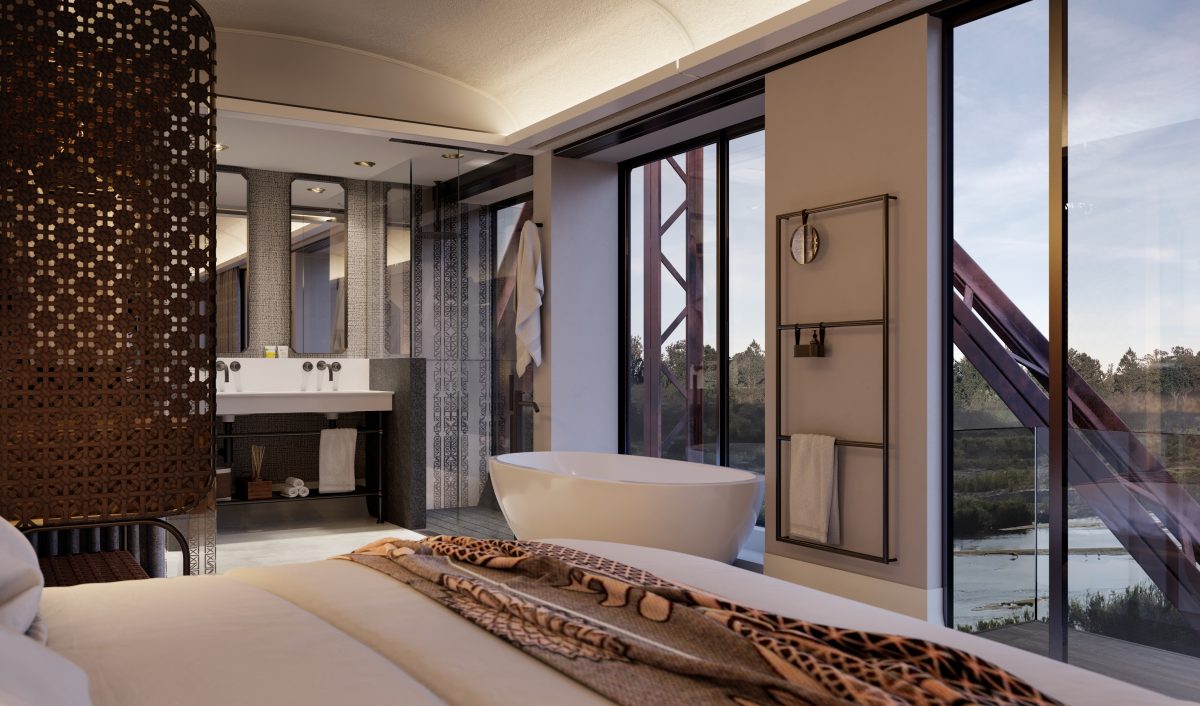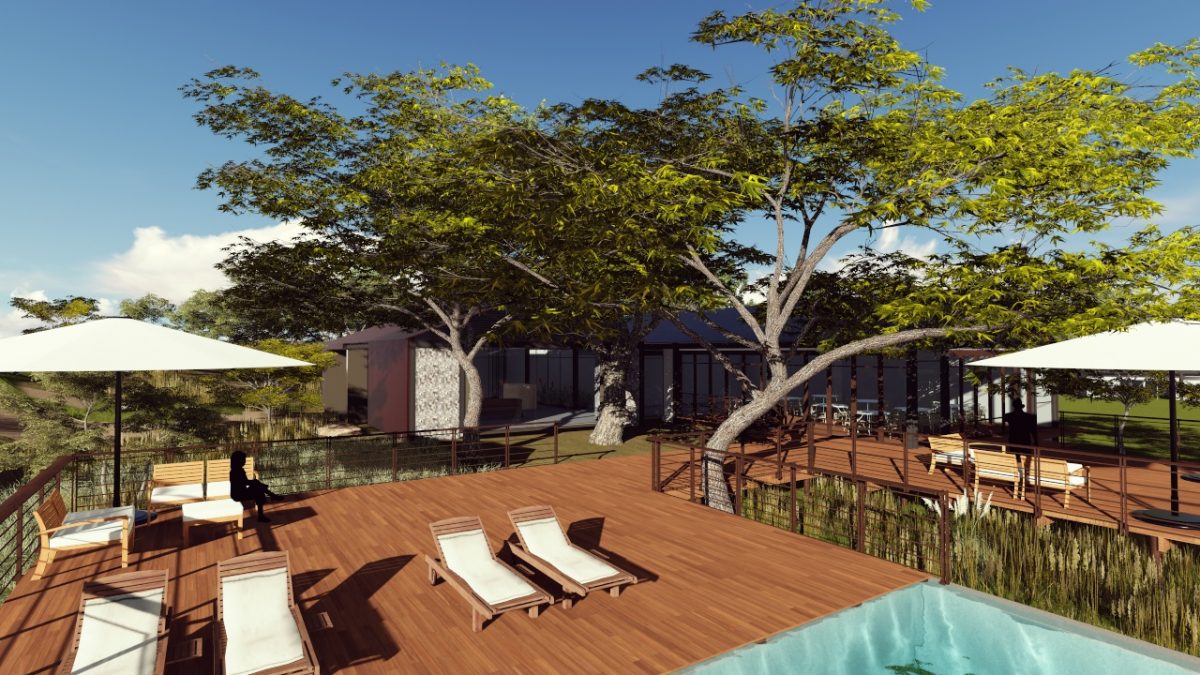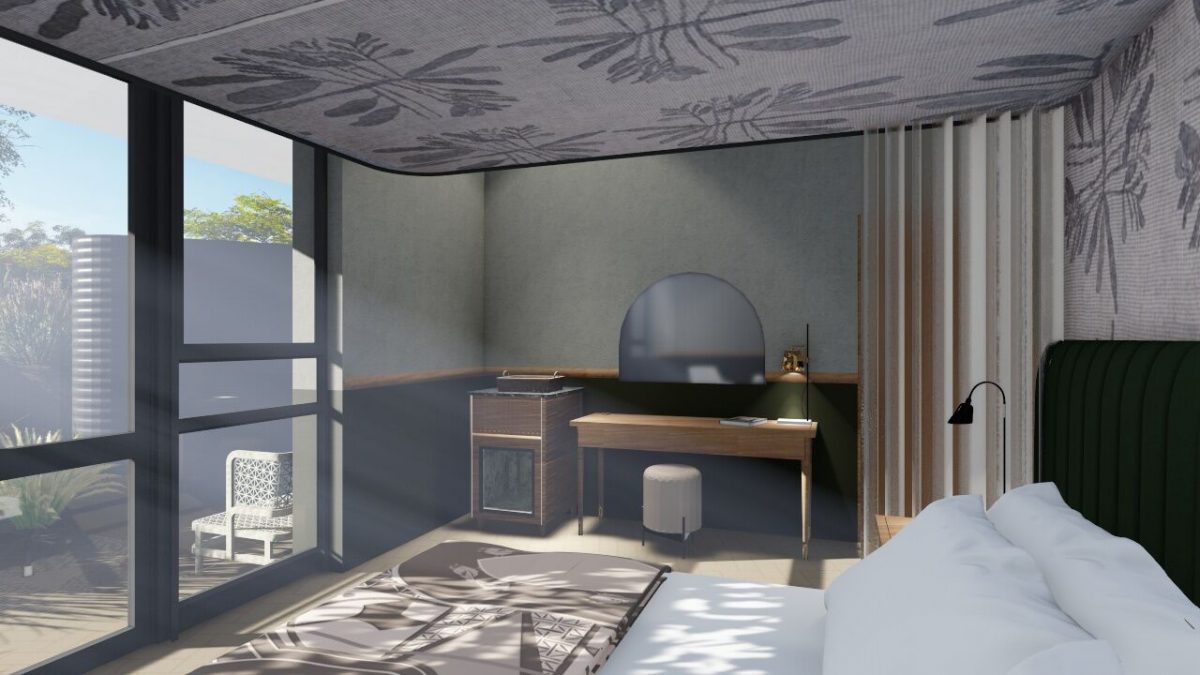By John O’Ceallaigh
It was about 100 years ago that the first tourists made their way to South Africa’s Kruger National Park, and what a thrill it must have been. Though many safari camps and tours have emerged in the intervening decades, the forthcoming Kruger Shalati lodge will replicate a key facet of the original explorers’ experience in a remarkable way, and its unique composition is set to draw fans of wildlife, architecture, history, design and rail alike.
Incomparable to any other safari lodge in the country, Kruger Shalati’s focal point is a stretch of renovated train carriages that extend over the entirety of the old Selati railway bridge, itself standing just shy of the end point of the original train track that brought those first trailblazers to Kruger. The bulk of those carriages have been transformed into plush, surprisingly spacious bedrooms, providing a unique setting for a safari stay like no other.


The lodge’s development was inspired by the itinerary of the aforementioned Kruger train tourists who, after being welcomed to Kruger National Park by its first warden James Steven-Hamilton, slept in exactly the same spot for one night before continuing their exploration of the wilderness the next day. Present-day guests will find their stays at the site (now a five-hour drive from Johannesburg or a two-hour drive from Kruger Mpumalanga International Airport) significantly more comfortable.
Developed by South Africa’s Thebe Tourism Group, the modernised bridge now includes an expanded deck that runs along its side. As such, no corridor was needed within the train carriages now permanently set on this elevated train track. The 24 Carriage Rooms perched here – there are two in each compartment – are sizeable. Illuminated by floor-to-ceiling windows and with freestanding baths by the bed, each looks towards the Sabie River and serves as a showcase for African design, with local art and crafts displayed throughout, and traditional designs and patterns integrated into furnishings.


Another renovated carriage will serve as a bar and lounge, though the most striking amenity will perhaps be a cantilevered plunge pool that is set on the edge of the deck, directly above the river, looking something like a bungee-jump drop-off point. (With the elevation providing a unique vantage point over Kruger, guests wallowing in this floating water hole might be able to spot the big five without even leaving their train track tub.)
As such, it perhaps isn’t the type of setting that would reassure parents of young children and only those aged 12 and over are permitted to stay in the Carriage Rooms. Families can instead stretch out across seven ground-level Bridge House rooms, one of which serves as the lodge’s honeymoon suite while others can be interconnected to accommodate group or multi-generational bookings. A second pool will also be located here.

Beyond the property itself, much of what Kruger National Park provides will be made visible on twice-daily game drives – though with some 500 species of bird, 114 different types of reptiles and 140-plus kinds of mammals, visitors could spend a year here and still see only a trace of KNP’s inhabitants.
That said, the likelihood of spotting the Big Five – an arguably outdated but still pressing motivation for many safari enthusiasts – is good and the Kruger Shalati team has developed under the guidance of SANPARKS (South Africa National Parks) to ensure its environmental impact is minimal and its contribution to the conservation of this precious ecosystem is meaningful.
Inclusive of board and twice-daily game drives, accommodation in one of Kruger Shalati’s Carriage Rooms or the lodge’s Honeymoon Suite starts at ZAR8,9650 (£395) per person. Accommodation in Kruger Shalati’s standard Bridge House rooms starts at ZAR7,950 (£350) per person.
